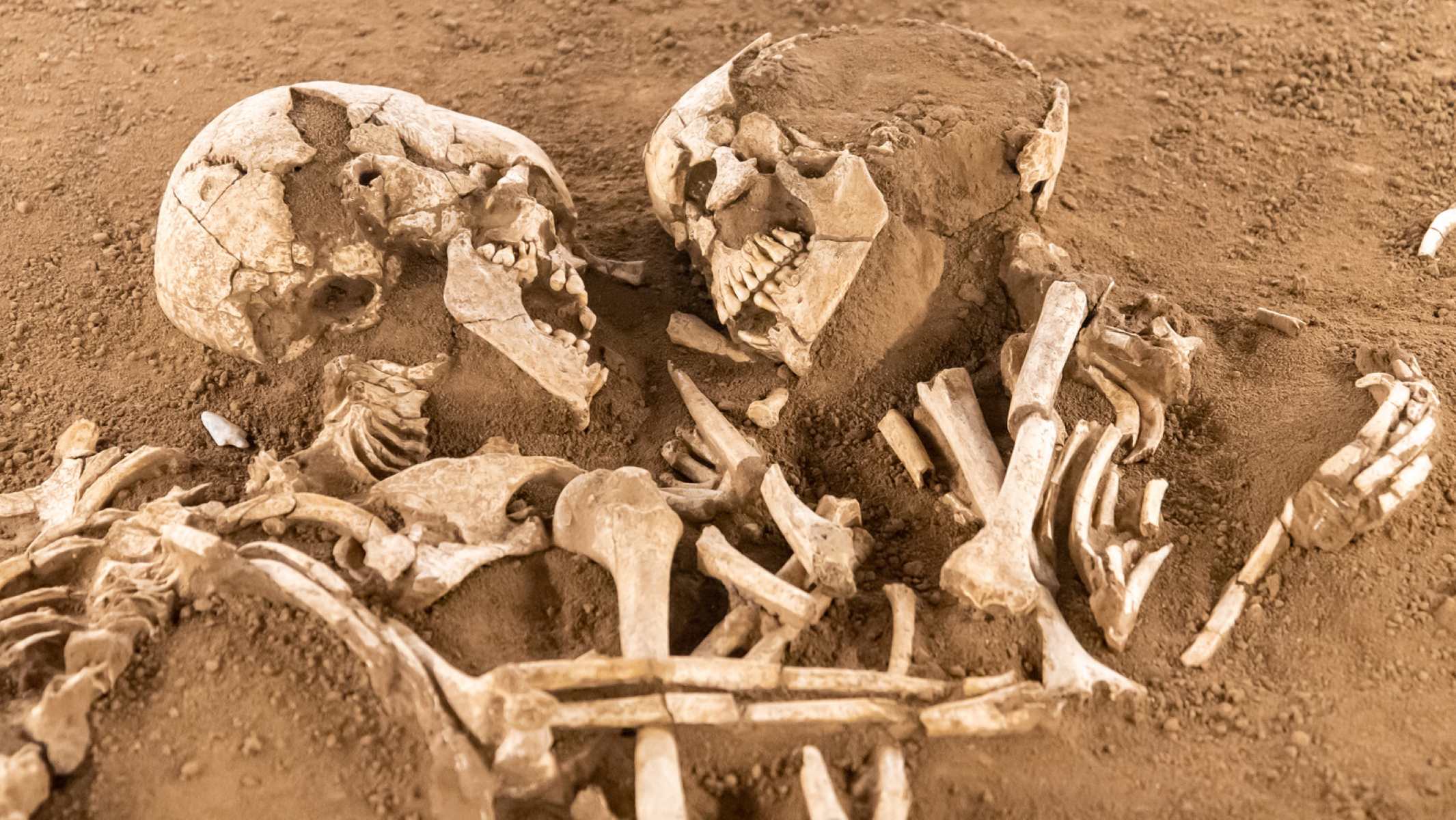
Who were the Hasanlu Lovers, and why do they matter? The Hasanlu Lovers are a pair of ancient human remains discovered in Iran's Teppe Hasanlu archaeological site. Found in 1972, these skeletons date back to around 800 BCE. They were unearthed in a grain bin, seemingly embracing or kissing, sparking debates about their relationship. Were they lovers, family, or simply two individuals seeking refuge during a catastrophic event? Their discovery offers a poignant glimpse into the past, highlighting the human aspects of ancient civilizations. The Hasanlu Lovers continue to intrigue archaeologists and the public, symbolizing both love and tragedy.
Key Takeaways:
- The Hasanlu Lovers, discovered in Iran, are ancient skeletons found in an embrace, sparking speculation about their relationship. Their story has captivated the public and inspired ongoing archaeological research.
- The discovery of the Hasanlu Lovers has had a significant educational and cultural impact, symbolizing both love and tragedy. Their legacy continues to inspire new generations of archaeologists and historians.
Discovery and Excavation
The Hasanlu Lovers were unearthed during a significant archaeological dig at Teppe Hasanlu, a site rich with ancient history. This discovery has fascinated both archaeologists and the public.
- The Hasanlu Lovers were discovered during the excavation of the Teppe Hasanlu site, conducted by a team from the University of Pennsylvania from 1956 to 1974.
- The site is located in the Solduz Valley in the West Azerbaijan Province of Iran.
- The human remains date back to around 800 BCE, confirmed by radiocarbon dating.
- The skeletons were found in a grain bin, suggesting they were hiding from invaders when they died.
Position and Condition at Time of Death
The position and condition of the skeletons provide clues about their final moments and have sparked much speculation about their relationship.
- The skeletons were found in a position that appears to be an embrace or a kiss.
- The right skeleton (SK 335) is lying on its back, while the left skeleton (SK 336) is lying on its left side, facing SK 335.
- The right skeleton (SK 335) is identified as a young male, aged 19-22 years.
- The left skeleton (SK 336) is estimated to be around 30-35 years old, but its sex determination is less definitive.
- Both skeletons show no evidence of injury or disease at the time of death.
Historical Context and Significance
Understanding the historical context of the Hasanlu Lovers helps us appreciate the significance of their discovery.
- The city of Hasanlu was destroyed by an invading army around 800 BCE.
- This event is believed to have been carried out by the Urartu Kingdom from the Armenian highlands.
- The discovery of the Hasanlu Lovers provides insights into the lives and deaths of ancient people.
- The site has yielded numerous skeletons, with approximately 246 found at the site altogether.
Exhibition and Public Perception
The Hasanlu Lovers have been displayed in museums and have captured the public's imagination, often being seen as a symbol of eternal love.
- The skeletons were exhibited at the Penn Museum from 1974 until the mid-1980s.
- They have since been the subject of various exhibitions and discussions about their significance and interpretation.
- The Hasanlu Lovers have captured the public imagination, often being referred to as a symbol of eternal love.
- The relationship between the two individuals is unclear, with some hypothesizing they were lovers, while others suggest they could have been family members.
Archaeological Challenges and Techniques
Determining the sex and relationship of ancient skeletons is challenging, requiring advanced archaeological techniques.
- Archaeologists must rely on forensic analysis, such as dental and pelvic structures, to make educated guesses about the individuals' identities.
- Radiocarbon dating and forensic analysis have been instrumental in uncovering the secrets of ancient civilizations.
- The excavation and analysis of the Hasanlu Lovers demonstrate advanced archaeological techniques.
Educational and Cultural Impact
The discovery of the Hasanlu Lovers has had a significant educational and cultural impact, inspiring new generations of archaeologists and historians.
- The discovery has educational value, providing a unique window into ancient life and death.
- The Hasanlu Lovers have become a cultural icon, symbolizing both love and tragedy.
- The excavation team led by Robert H. Dyson from the University of Pennsylvania played a crucial role in uncovering the site and its secrets.
- Ongoing research at the Penn Museum and other institutions continues to study the bone material found at Hasanlu.
Public Engagement and Media Coverage
The Hasanlu Lovers have been featured in various media outlets, helping to keep their story in the public eye and sparking further interest in archaeology.
- The discovery has garnered international interest, with scholars and enthusiasts from around the world contributing to the discussion and analysis of their significance.
- The Hasanlu Lovers have been featured in articles, documentaries, and social media platforms.
- The skeletons have been exhibited in museums, providing a tangible connection to the past for visitors.
- Educational programs and workshops have been developed around the Hasanlu Lovers, aiming to teach students about archaeology, history, and cultural significance.
Archaeological Ethics and Cultural Sensitivity
When interpreting ancient remains, it is essential to approach the subject with cultural sensitivity and respect.
- Archaeological ethics dictate that discoveries should be handled with respect and care.
- The treatment of the Hasanlu Lovers reflects these ethics, ensuring that their story is told in a manner that respects both the individuals and their historical context.
- There is often a disconnect between public perception and historical reality.
- The discovery of the Hasanlu Lovers has been surrounded by controversies, including debates about their relationship and sex.
Legacy and Ongoing Research
The Hasanlu Lovers have left a lasting legacy in archaeology, contributing to our understanding of ancient civilizations and the importance of preserving historical artifacts.
- The Hasanlu Lovers have had a significant educational impact, inspiring new generations of archaeologists and historians.
- The discovery has left a lasting legacy in archaeology, contributing to our understanding of ancient civilizations.
- Ongoing research and educational initiatives continue to study and share the story of the Hasanlu Lovers.
The Legacy of the Hasanlu Lovers
The Hasanlu Lovers are more than just ancient skeletons; they’re a window into a world long gone. Found in an embrace, these remains from around 800 BCE have sparked endless curiosity and debate. Were they lovers, family, or simply two people caught in a tragic moment? While we may never know for sure, their discovery at Teppe Hasanlu offers invaluable insights into the past. The site itself, rich with history, continues to be a treasure trove for archaeologists. Exhibited in museums and studied by scholars worldwide, the Hasanlu Lovers remind us of the human connections that transcend time. Their story, though shrouded in mystery, captivates our imagination and underscores the importance of preserving our cultural heritage. As we learn more, these ancient figures will continue to inspire and educate future generations.
Frequently Asked Questions
Was this page helpful?
Our commitment to delivering trustworthy and engaging content is at the heart of what we do. Each fact on our site is contributed by real users like you, bringing a wealth of diverse insights and information. To ensure the highest standards of accuracy and reliability, our dedicated editors meticulously review each submission. This process guarantees that the facts we share are not only fascinating but also credible. Trust in our commitment to quality and authenticity as you explore and learn with us.


